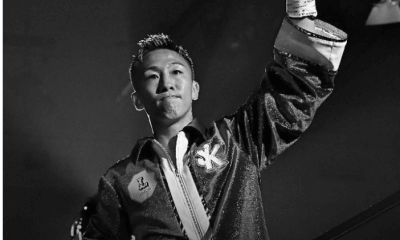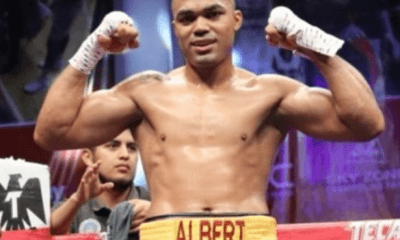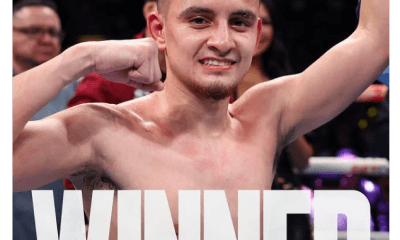Featured Articles
Crunching the Numbers, Montgomery vs Jack in 1944 Drew a Larger Gate than Mayweather-Pacquiao
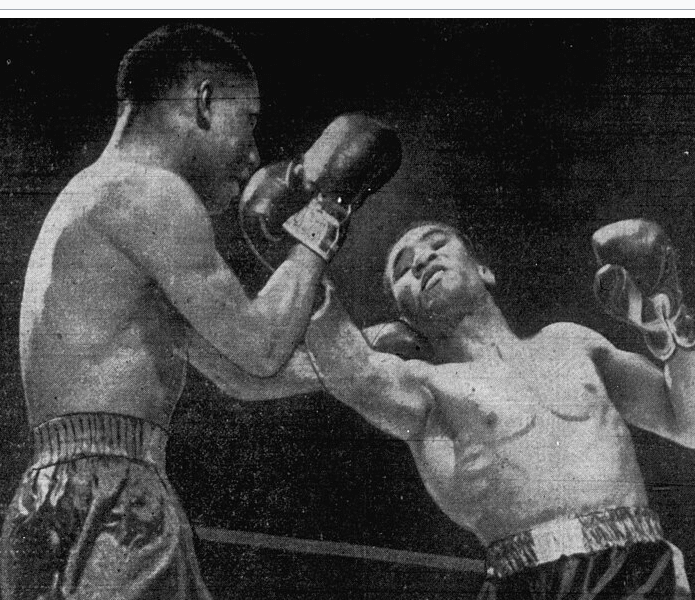
The 2015 bout between Floyd Mayweather Jr and Manny Pacquiao at the MGM Grand in Las Vegas stands as the richest prizefight in history by a hefty margin. A crowd of 16,219 (paid) produced a gate of $72,198,500.
Eighty years ago this week, on Aug. 4, 1944, a show at Madison Square Garden generated a larger gate, notwithstanding the fact that the main event was a non-title fight girded by a flimsy 5-fight undercard.
Yes, it takes some creative bookkeeping to say that this boxing card grossed more revenue on-site than Mayweather-Pacquiao, but before we finagle with the data, let’s meet the principals in the featured attraction, Bob Montgomery and Beau Jack.
Bob Montgomery
One of nine children born to a South Carolina sharecropper and a Cherokee mother, Bob Montgomery moved to Philadelphia in his mid-teens and was working in a laundry when he first ventured into a boxing gym. The “Bobcat” made his pro debut in Atlantic city at age 19 and was 26-1-2 when he secured his first good payday, locking horns with world lightweight champion Lew Jenkins in a non-title bout at Philadelphia’s American League baseball park.
That didn’t go well for Montgomery. He had Jenkins on the canvas in the third round, but Jenkins came on strong and won a unanimous decision.
Two fights later, Montgomery lost again, losing a narrow 10-round decision to Sammy Angott, his first of three losses to the future world lightweight champion. But Montgomery persevered and on May 21, 1943, he won the New York State version of the 135-pound title with a 15-round decision over Beau Jack at Madison Square Garden.
This would be the first of their four meetings, all of which were closely contested affairs at Madison Square Garden and all of which produced an upset. Jack turned the tables on Montgomery later that year, regaining the title, and the Philadelphia Bobcat took it back in March of 1944, rebounding from a devastating knockout (Al “Bummy” Davis flattened him in the first round) to edge Jack by a split decision.
Beau Jack
Beau Jack was born Sidney Walker in Waynesboro, Georgia, and raised on a farm on the outskirts of Augusta by his maternal grandmother who hoped that he would become a preacher. Lore has it that he first attracted notice fighting in battle royals at the Augusta National Golf Club and that the famous golfer Bobby Jones put the bite on the club’s wealthy white members to sponsor the lad who was packed off to Springfield, Massachusetts, to be tutored in the finer points of the sweet science. Beau never did learn the art of defense – he was a high-octane fighter who threw punches from all angles with no regard for what was coming back at him – and that made him America’s top box office attraction (cumulatively) during the World War II era.
Jack had his early pro fights in Augusta and nearby Aiken, South Carolina, and had 25 fights in Holyoke, Massachusetts, before making his New York debut in a 6-rounder at Brooklyn’s Ebbets Field on Aug. 5, 1941. Later that month, he made his first appearance at Madison Square Garden, the Mecca of Boxing, and within 15 months would be headlining shows at the fabled Big Apple sock palace.
Jack would eventually appear in 20 main events at Madison Square Garden, a record that will be hard to beat. Thirteen were compressed into a 33-month span preceding his fourth and final meeting with Bob Montgomery.
Montgomery-Jack IV
Non-title fights were common in this era. John Henry Lewis had a ridiculous 52 non-title fights during the three years (1935-38) when he was recognized as the world light heavyweight champion. In theory, no title was necessary to make Montgomery-Jack IV an alluring match-up. Styles make fights and their styles meshed well. And neither man had an advantage in terms of preparation. Both were mustered into the Army on the same day and both were furloughed on the same day to return to New York to finish their training and make the rounds with the boxing writers.
Now let’s cut to the case. What made Montgomery-Jack so unique from the standpoint of gate receipts?
To procure a ticket to the event, one had to purchase a war bond. A pew in the first row cost $100,000. The second row sold for $50,000 and the third row for $25,000. But no one who purchased a pew in these rows was allowed to sit there. These choice seats, 164 in total, were reserved for wounded servicemen recently returned from battlefields in Europe and the Pacific. Their seats were donated to them by wealthy philanthropists who had to sit farther back if they had any interest in attending the show.

Beyond these three rows, the arena was divided into three tiers corresponding to war bonds in $100, $50, and $25 denominations. According to post-fight reports, when the receipts were tabulated, fight-goers contributed $35,804,900 to Uncle Sam to help pay for the cost of the war. Montgomery and Jack fought for free as did the other boxers and their handlers. Promoter Mike Jacobs supposedly earned nothing and other expenses were born by the radio sponsor, the Gillette Safety Razor Co.
—
Montgomery-Jack IV was a good but not great fight. Beau Jack won a majority decision, knotting the series at 2-2 where it would remain. Altogether they fought 55 rounds and even after 55 rounds it was hard to separate them. A reporter summed the total of all the scorecards and the tally was 78 rounds for Jack, 77 for Montgomery, and 10 even.
Bob Montgomery post-fight
Montgomery successfully defended his title twice before losing it to Ike Williams on a sixth-round stoppage before an announced crowd of 30,500 at Philadelphia’s Municipal (formerly Sesquicentennial) Stadium. His loss to Williams was his first of seven defeats to close out his career, reducing his final record to 75-19-3 (37 KOs). In retirement, he found work in a brewery when his savings ran out and dabbled in fight promotions. In 1995, with a big push from Philadelphia promoter J. Russell Peltz, he was inducted into the International Boxing Hall of Fame, joining his old rival Beau Jack in the Canastota shrine. The Bobcat died three years later at age 79 (some say 77) from complications of a stroke at a Coatsville, Pennsylvania VA hospital
Beau Jack post-fight
Beau Jack continued fighting until 1955, leaving the sport with a record of 91-24-5 (44 KOs). He was inducted into the IBHOF with the second class of 1991 and passed away nine years later at age 78 at a nursing home in Miami, succumbing to complications of Parkinson’s disease.
As a boy in Georgia, Jack worked as a shoeshine boy to help his grandmother make ends meet. After boxing, he returned to that occupation, operating a shoeshine stand at the Fontainebleau Hotel in Miami Beach. In his spare time, he trained amateur boxers at the 5th Street Gym before that iconic establishment was shuttered in 1993. He had a wife and children in the area, but lived alone in a furnished room.
Jack, who purportedly never learned how to read, became Exhibit A whenever there was a movement to create a pension plan for boxers, but Beau wasn’t embarrassed by his circumstances. Photos of him in his boxing togs ornamented his shoeshine stand and he enjoyed talking with people who were familiar with his boxing exploits. Moreover, the Fontainebleau was brimming with big tippers and he undoubtedly made more money than any bootblack in the country. (But, yes, the image of a once-popular boxer, especially a black boxer, shining shoes is an image freighted with uncomfortable symbolism.)
About That Gate:
World War II war bonds were series e bonds that matured in 10 years. The announced gate for Montgomery-Jack IV ($35,804.900) was the face value of the bonds if all were turned in on the day of maturity. However, these particular bonds were sold at 75 percent of face value. That reduced the total amount collected to $26,898,675. Adjusted for inflation, that equals approximately $481 million in today’s dollars which leaves the Mayweather-Pacquiao gate in the dust.
Granted, we are comparing apples and oranges. Those in attendance at the “War Bonds Fight” essentially gained admission by loaning money to the U.S. government, money that would eventually be returned to them or their heirs with interest. But it speaks well of boxing fans and the boxing community that they stepped up to the plate in our nation’s time of need.
To comment on this story in the Fight Forum CLICK HERE
-

 Featured Articles3 weeks ago
Featured Articles3 weeks agoThe Hauser Report: Zayas-Garcia, Pacquiao, Usyk, and the NYSAC
-

 Featured Articles2 weeks ago
Featured Articles2 weeks agoOscar Duarte and Regis Prograis Prevail on an Action-Packed Fight Card in Chicago
-

 Featured Articles1 week ago
Featured Articles1 week agoThe Hauser Report: Cinematic and Literary Notes
-

 Book Review4 days ago
Book Review4 days agoMark Kriegel’s New Book About Mike Tyson is a Must-Read
-

 Featured Articles4 weeks ago
Featured Articles4 weeks agoManny Pacquiao and Mario Barrios Fight to a Draw; Fundora stops Tim Tszyu
-

 Featured Articles4 weeks ago
Featured Articles4 weeks agoArne’s Almanac: Pacquiao-Barrios Redux
-

 Featured Articles3 weeks ago
Featured Articles3 weeks agoRemembering Dwight Muhammad Qawi (1953-2025) and his Triumphant Return to Prison
-
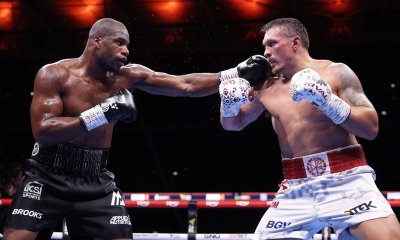
 Featured Articles4 weeks ago
Featured Articles4 weeks agoOleksandr Usyk Continues to Amaze; KOs Daniel Dubois in 5 One-Sided Rounds






